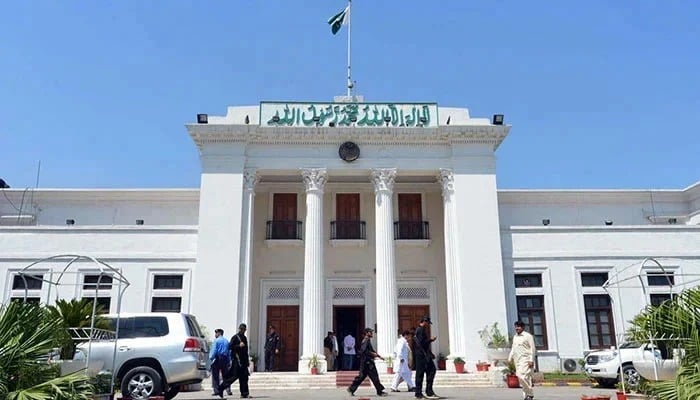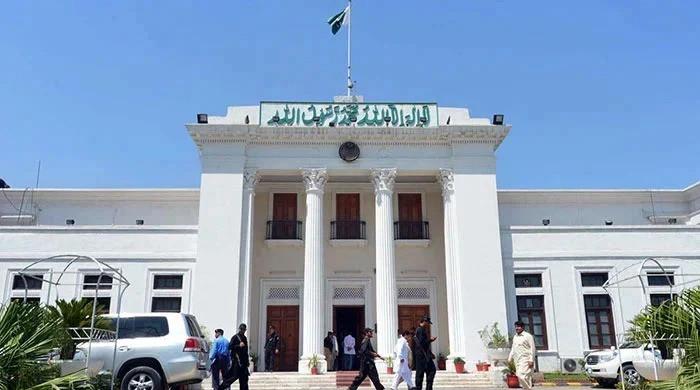
The Khyber Pakhtunkhwa Mines and Minerals Amendment Bill 2025 is an update to the 2017 law, with the primary objective to attract domestic and foreign investment, enhance transparency, and curb illegal mining to leverage the province’s vast mineral resources for economic development.
This comprehensive legislation, detailed in a recent white paper, addresses governance, enforcement and economic development while prioritising transparency and environmental responsibility. Definitions have been sharpened and key roles now require qualified mining engineers or geologists selected on merit. The appellate tribunal, previously chaired by the secretary of minerals, will now be led by a former high court judge to ensure impartiality. New bodies, such as the Mineral Investment Facilitation Authority and a Mineral Testing Laboratory, aim to attract investors and enhance technical oversight.
The 2025 bill extends its reach across the province, with special provisions for merged districts and sub-divisions until December 31, 2030, ensuring a gradual integration that respects local customs. The bill emphasises transparency through a legally binding online Mining Cadastre System, mandates environmental and social safeguards and prioritises community rights, CSR and local employment.
Similarly, it aims to establish a Special Mines Force to prevent illegal mining and the establishment of an independent Mines Appeal Court for fair justice. The Special Mines Force is a key provision in the bill, aimed at enforcing regulations and curbing illegal mining. The force is designed to combat illegal mining and stop the ‘mafia’ occupying mineral resources in KP, particularly in the merged tribal districts, where an estimated 3,500 mines are dormant or unregulated.
It will be a uniformed unit with powers to register FIRs, make arrests and halt illegal mining activities, including seizing equipment. The force will operate under the KP Mineral Development Authority, a new body proposed in the bill to oversee licensing, permits and enforcement. A Special Court for Mines and Minerals will ensure swift trials within 120 days, supported by dedicated police stations. This contrasts sharply with the 2017 law’s lack of robust enforcement, promising a crackdown on unauthorised activities.
The controversy relating to fewer benefits for local communities is likely due to differing political interpretations of its provisions, particularly in merged districts, where communities have historically relied on mineral resources. The 2025 bill significantly enhances benefits for local communities compared to the 2017 law by prioritising their access to mineral titles, protecting customary shares and ensuring environmental restoration.
Through the minimum local content requirements, the act provides for mining companies to prioritise local employment, procure goods and services from nearby businesses and invest in community development projects like schools and healthcare facilities. It also includes a 10% non-contributory free-carried interest for the province, generating revenue that can fund regional infrastructure. Unlike the 2017 law, which lacked explicit mandates, the 2025 bill ensures that communities, especially in merged districts, benefit economically through jobs and contracts.
The bill has sparked political controversy with various critics voicing concerns about federal overreach. One of the controversies pertains to Section 6(i), which allows the licensing authority to implement not only the recommendations of the Mineral Investment Facilitation Authority (MIFA) but also the suggestions of the federal mineral wing. Given that mining is a provincial subject under the 18th Amendment, this clause has sparked concern over federal overreach into KP’s legislative and administrative domains.
However, the bill explicitly states that the Licensing Authority may “implement recommendations of the Mineral Investment Facilitation Authority and may implement suggestion of the Federal Mineral Wing in relation to the powers and functions of the Licensing Authority” (Section 6(i)). This has been framed as a discretionary provision, not a mandatory one.
The bill also emphasises provincial autonomy by requiring the Licensing Authority to ensure consistency across provinces (Section 6(2)(d)), which aligns with the 18th Amendment’s devolution of mining to provinces. The Federal Mineral Wing’s role is advisory, and its suggestions are subject to provincial approval, ensuring the province retains ultimate control.
The reconstitution of MIFA under Section 19 has also sparked controversy. The body, previously composed of seven members including the minister for mines and minerals development, is now set to expand to 14 members, including five provincial ministers. The bill also allows the MIFA chairperson to co-opt any person as a member, a move critics say opens the door to politicisation and non-transparent appointments.
It should be clear that the expansion of MIFA to 14 members, including provincial ministers and a federal representative (Section 19(2)), is intended to enhance coordination and stakeholder representation. The inclusion of federal input (clause (l)) is limited to an “invited” member, preserving provincial dominance.
The chairperson’s power to co-opt members (Section 19(3)) is balanced by the requirement for transparency in MIFA’s annual reports (Section 20(3)), which must be publicly disclosed via the Mining Cadastre System (Section 9(5)).
Private sector stakeholders have also voiced concerns over Section 2(kk), which mandates joint ventures with government-owned companies for any large-scale mining project involving capital investment of Rs500 million or more.
Critics argue that if this decision is left to the discretion of the government, without a clearly defined partnership ratio or conditions, it will act as a barrier to free market participation thereby deteriorating investor confidence.
It becomes increasingly important to clarify that the requirement for joint ventures with government-owned companies in large-scale mining (capital investment greater than Rs500 million) is made clear by the proviso that terms and conditions, including partnership ratios, will be “determined by government” (Section 2(kk)).
This allows flexibility to negotiate terms case-by-case, rather than imposing rigid ratios. The exemption for cement factories and the Khyber Pakhtunkhwa Minerals Development and Management Company (Section 46(6)) indicates targeted applicability, not a blanket barrier to private investment.
Similarly, critics have also argued about the bill’s treatment of strategic and rare earth minerals. These are to be defined and notified by the provincial government, or on the guidance of the federal mineral wing via MIFA. The lack of clear definitions or fixed criteria in the bill has led to apprehensions that valuable mineral resources may fall under central control.
However, strategic minerals are explicitly listed in Schedule I (Paragraph 9), while rare earth minerals are defined as those declared by the provincial government via gazette notification (Section 2(sss)). The bill does not cede control to the federal government; instead, KP retains authority to designate and regulate these minerals (Section 27(2)). MIFA’s role is advisory (Section 20(1)(k)), and final decisions rest with the provincial government.
Finally, multiple clauses further extend advisory powers to the federal mineral wing on key operational and financial matters such as royalty structure, pricing formulas, model agreements, licensing authority powers and mining application systems.
The federal mineral wing’s advisory role in royalty structures (Section 19(f)), pricing formulas (Section 19(g)), and model agreements (Section 19(i)) is contingent on MIFA’s review and recommendations. For instance, royalty rates are prescribed by the provincial government (Section 84), and MIFA’s recommendations must align with KP’s policies (Section 20(1)). The Mining Cadastre System (Section 9) and licensing processes (Section 6) are provincially administered, ensuring federal input remains non-binding.
The new framework calls for the establishment of Auction Committees at both the provincial and district levels to manage transparent and competitive mineral rights auctions. Also, a defined mortgage mechanism, allowing mineral title holders to secure financing through their own assets without mortgaging the mineral title itself.
The bill balances provincial autonomy with pragmatic collaboration, ensuring KP’s control over its mineral resources while allowing for structured federal-provincial dialogue. It sets a bold vision for sustainable growth. Key safeguards include discretionary language, transparency mechanisms and provincial oversight. Concerns over federal overreach or investor barriers are mitigated by the bill’s explicit provisions for provincial discretion and case-specific flexibility.
The writer is the information adviser to the chief minister of Khyber Pakhtunkhwa.
Disclaimer: The viewpoints expressed in this piece are the writer’s own and don’t necessarily reflect Geo.tv’s editorial policy.
Originally published in The News







More Stories
Centre urges Supreme Court to dismiss petitions challenging judges transfer
Meghan Markle told to take risks amid growing backlash over show
China unexpectedly anoints new trade negotiator amid US tariff war